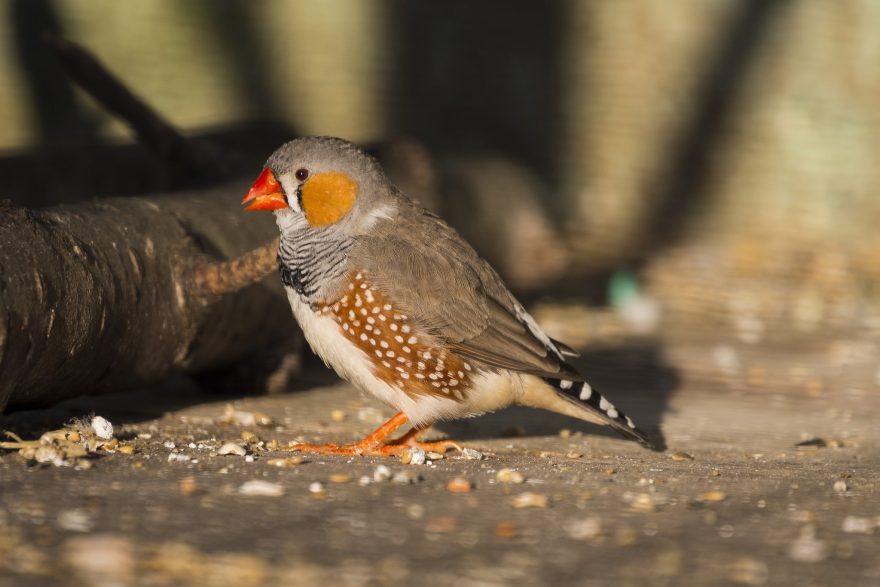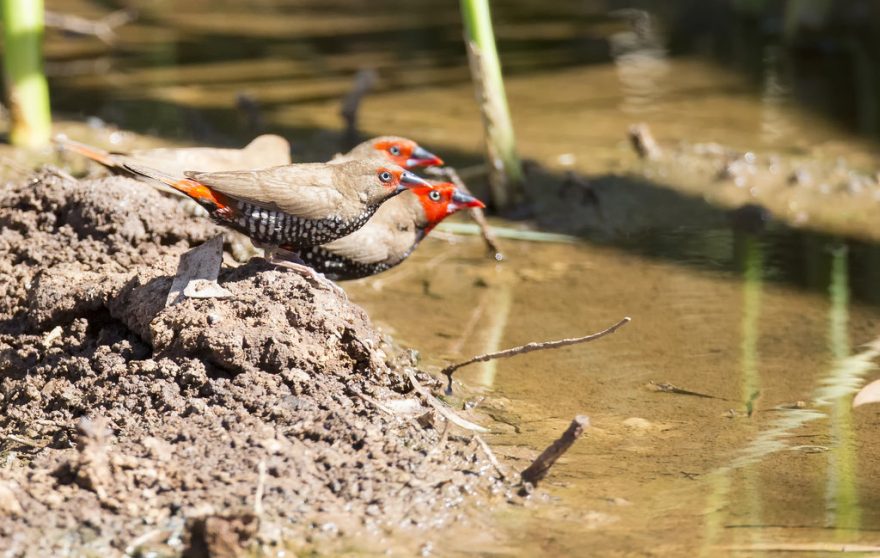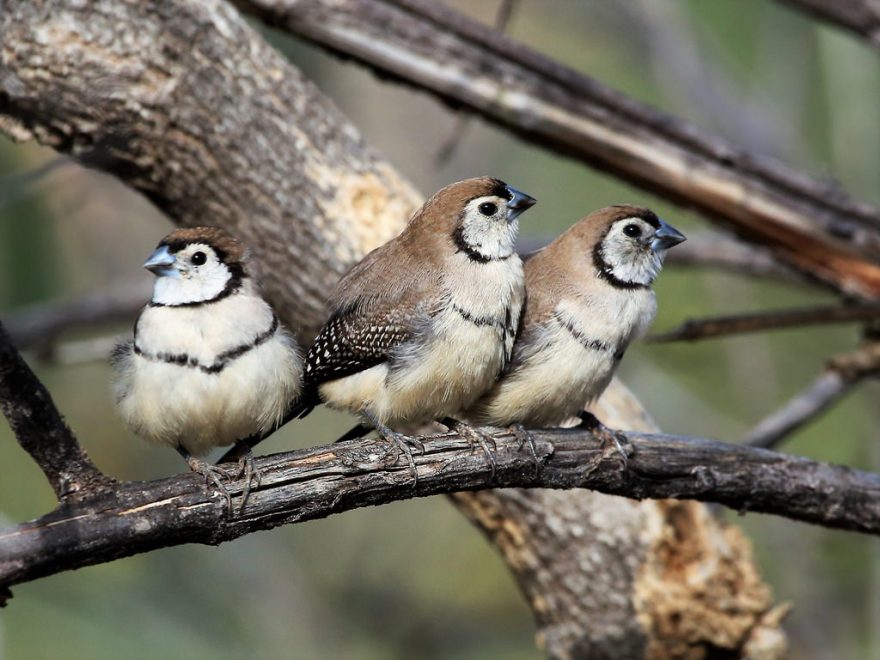Getting started in the finch-keeping hobby can be overwhelming. There are dozens of different species available, each with slightly different care requirements and compatibility challenges. The purpose of this article is to look at five of the most straightforward and affordable options to those who are just getting started. All of these birds can be successfully kept with only seed, water and occasional greens and don’t require any live food — even when breeding[1. Although they don’t require live food, all will benefit from its inclusion in their diet.].
Zebra Finch
Zebra finches are the ideal species for a beginner. They are very affordable, often costing just a few dollars each, and can thrive in conditions that other finches wouldn’t. Poor diets, exposure to temperature extremes, and untidy cages will do little to deter these birds from living and breeding.
Zebras aren’t just fearless survivors. They have a lot of personality and have a charming song that sounds like a little trumpet. There are also dozens of different color mutations that have been developed through selective breeding.

Society (Bengalese) Finch
Society finches are a man-made domesticated species that’s suitable for small aviaries or cages. They breed readily, have a straightforward diet and have an adorable habit of communally roosting. They even share a single nest between multiple pairs.
Along with Zebra finches, they’re among the most affordable of finch species and — thanks to their usefulness as foster parents for other birds — they’re readily available from many breeders.
Painted Firetail (Emblema) Finch
Emblemas aren’t as hardy and affordable as Zebra finches, but are still a very good choice for a beginner. As long as they are protected from wet aviary floors and cold breezes, they will thrive and out-breed almost any other species.
Emblemas are fascinating to watch in an aviary. They built unusually complex nests, sometimes in the strangest places and generally have little fear of their human keepers. It’s a long-running joke in aviculture that Emblema finches would build a nest in your hair if you stood still long enough.

Star Finch
Star finches are remembered fondly by many veteran keepers as “the first nice bird I kept.” They are a peaceful, hardy, and attractive addition to almost any finch collection and have fairly minimal care requirements. They are a little more challenging to breed[2. They need to be offered fresh seeding grasses in the breeding season and provided with a nesting location that offers some privacy.] than some of the other species in this list, making them a good option for those beginners seeking to improve their husbandry skills.
Stars are on the more expensive end of “affordable,” but are nonetheless a worthwhile addition to any beginner’s aviary.
Double-barred Finch
The Double-barred finch is a vibrant and active finch that’s a perpetual delight to watch. They are a very social bird and will spend all day preening their mate or playfully flying around. Best kept in a small colony of three or four pairs, this is one species that is better housed in a decent-sized aviary than a cage.
Double-barred finches, sometimes called Owl finches, are extremely popular. Large numbers are bred throughout the world, making them an affordable and readily-available option for beginners.

Closing Thoughts
Zebra fiches and Society finches are the two easiest species to keep as a beginner. As you start to improve your skills and move onto the “nicer” species like Emblemas, Stars or Gouldians; you may need to get rid of the Zebras and Society finches. The Zebras, particularly, will be more assertive than the other species and tend to stress them out.